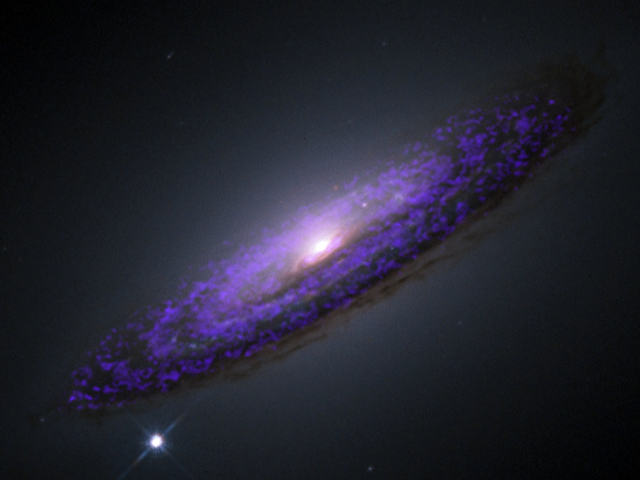Better black hole mass estimates in hours
Ars Technica » Scientific Method 2013-01-30

The data is good: nearly every large galaxy has at least one supermassive black hole in its nucleus. The data is bad: there generally seems to be a connection between the mass of the black hole and the size of the galaxy's bulge, at least for many galaxies. And the data is ugly: accurate direct measurements of black hole masses are hard to come by, since they're buried deep in the middle of their host galaxies.
A promising technique has used gas dynamics in the galaxy as a black hole mass tracer, as proposed by Timothy A. Davis, Martin Bureau, Michele Cappellari, Marc Sarzi, and Leo Blitz. They tested their hypothesis on a galaxy that has a large amount of carbon monoxide emissions, prime for observations with submillimeter observatories. This method requires far less observation time than many other techniques, meaning that many supermassive black holes could potentially be surveyed.
Measuring supermassive black hole (SMBH) masses is not always straightforward. Astronomers can estimate masses by tracking stars in the central regions of galaxies as they orbit the black hole or by mapping emission by nearby ionized gas. Another promising method used X-ray and radio light for the most massive galaxies in the Universe. But these techniques aren't possible for all galaxies
Read 8 remaining paragraphs | Comments